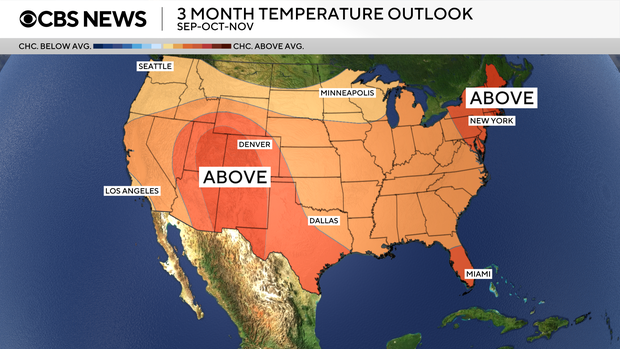The 2025 leaf peeping season is getting underway with some parts of the U.S. already starting to see fall foliage.
But peak colors are still to come. Using a data model that factors in historical and forecast temperatures and precipitation, the types of trees in a region, trends and user data, travel brand SmokyMountains.com has predicted when trees will reach peak foliage across the country.
Here’s what to expect:
As the season progresses, colors turn earliest in the north and gradually sweep south. The Mid-Atlantic, Great Lakes regions and much of the West will reach peak color by mid-October, followed by some states in the South and lower Midwest in late October and early November. Parts of the Deep South, Southern Plains and Florida may not see peak foliage until mid-November.
Warm, sunny days and cool, crisp but not freezing nights are the best conditions for vibrant leaf displays, according to the U.S. Forest Service.
Regional forecasts
- Northeast and Appalachians: Cooler-than-average temperatures and below-normal precipitation are expected to cause leaves to reach peak color earlier and be more vibrant, forecasters say.
- Pacific Northwest and Intermountain West: The weather is expected to be warmer and wetter than normal, which typically pushes color change later and may tone down the vibrancy in lowland areas, though mountains may see early color.
- Southeast and Deep South: Warmer but drier conditions may lead to delayed and more subdued foliage, according to forecasters. These areas might see peak color around late October through mid-November.
Fall temperature trends
These regional patterns are part of a broader warming trend.
The fall outlook from the National Weather Service’s Climate Prediction Center says temperatures are forecast to be above average across the U.S., especially in the Southwest and Northeast. It also predicts less-than-average precipitation across much of the Southwest and Southern Plains with only the Pacific Northwest and the Southeast forecast to have above-average precipitation.
Nikki Nolan
Nikki Nolan
The fall season has warmed in every county across the contiguous U.S. since 1970. It’s warming fastest in the Southwest, according to a Climate Central analysis based on data from the National Oceanic and Atmospheric Administration.
Fall temperatures have risen in 237 U.S. cities, averaging an increase of 2.8°F from 1970 through 2024. Unusually warm fall days now occur more frequently in 238 cities, or 98% of the 243 cities analyzed.

contributed to this report.
Source link





